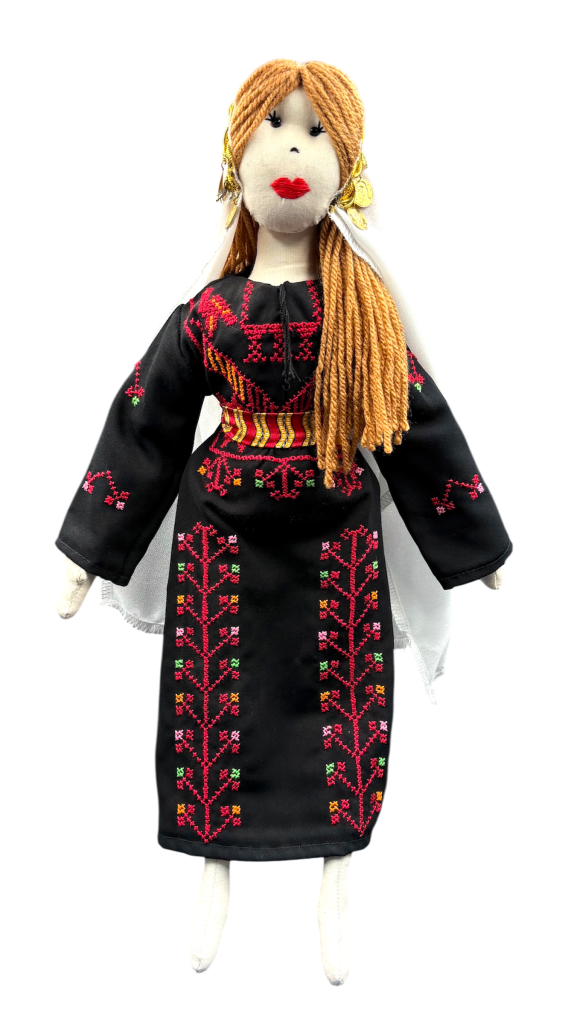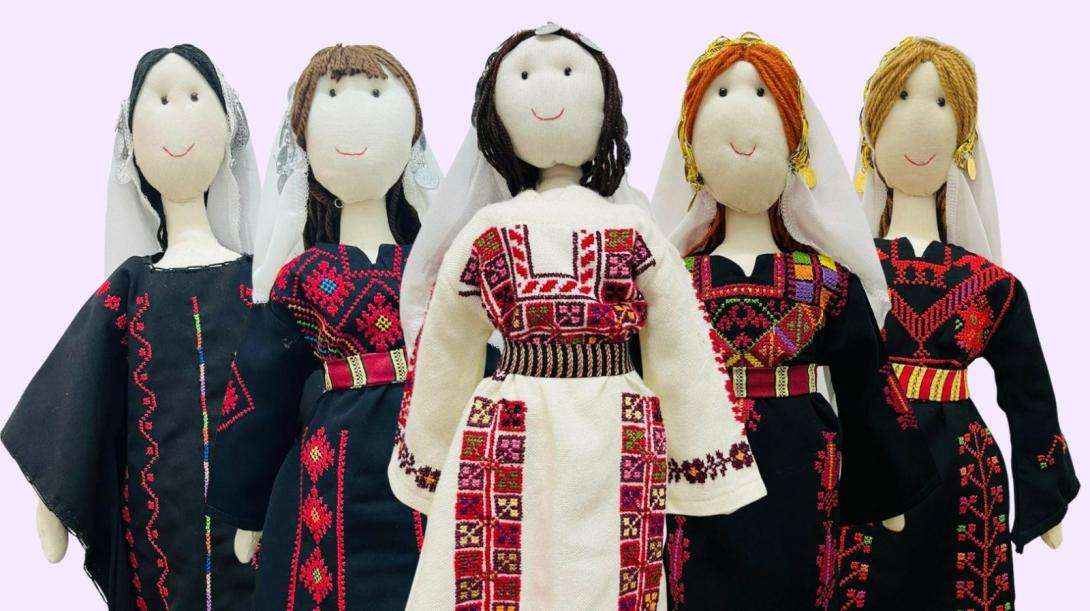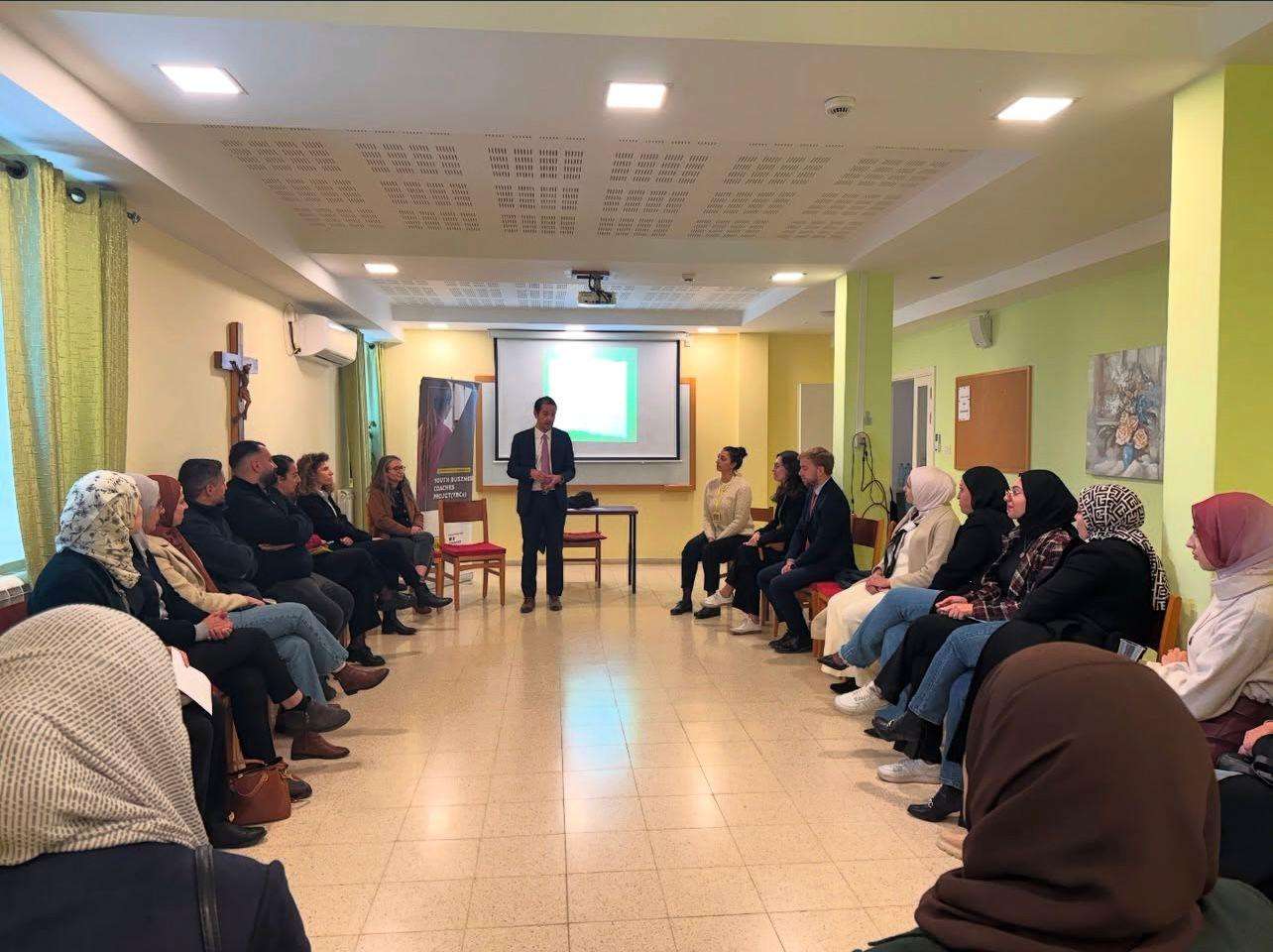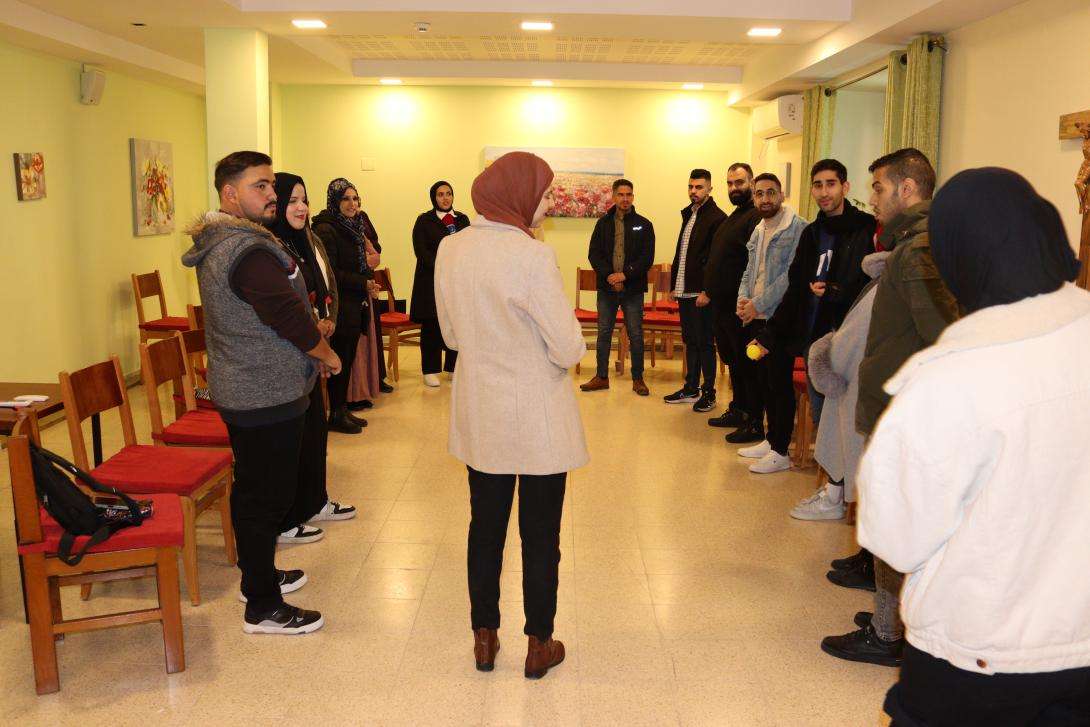

Christmas Tree Lighting
During my visit to Al-Qubeiba, my ancestral town, a flood of memories came back to me. The sacred places there seemed to pulse with new life within me. Accompanied by my young granddaughter, we stepped out of the historic Emmaus Monastery, her eyes wide with wonder reflecting the magnificence of the site. “Grandma, how grand this monastery is with its ancient stones!” she exclaimed. We stood there, among the local residents and foreign tourists, as the monastery seemed to narrate tales from times long past.
“My child, this monastery dates back to a church that was rebuilt in the 14th century. It’s not the only one in our village; there’s also the The Franciscan Convent and The Salvatorian Convent. A well-known story tells that Christ shared a piece of bread with two of his disciples here, during his journey to Emmaus along the old Roman road that connected Jerusalem to Jaffa and passed through our town. From here, my dear, we can see the Mediterranean Sea and the Palestinian coastal plain with the monastery’s majestic view.”
I pointed towards the old town, where ancient domes undulated above the buildings. “Al-Qubeiba Village, named after the domes, is part of the heritage of Jerusalem district. It abounds with old buildings that still bear witness to our rich history to this day. Did you know that in Qubeiba, Christmas is almost like a national holiday celebrated by both Muslims and Christians?”
My granddaughter, brimming with excitement, added, “Grandma Zarifa, I want to attend the Christmas tree lighting here this year!” I replied with affection, “Before I married and left the village, the festive atmosphere used to fill it with joy and cheer, with scout and music bands lining up, and the villagers distributing sweets and welcoming religious figures during the holiday season.”
Looking at the trees and vineyards around us, I said to her, “I am now nearing eighty, but if these stones could speak, they would tell you stories of my childhood here. Kabibah never closes its doors; it’s open to visitors and tourists from all around the world. Behind these buildings lies our national heritage, which we must preserve.”
My granddaughter, with her eyes twinkling, said, “Grandma, I want to live in Qubeiba like you and create memories here, welcoming tourists to see the history of our village.” I smiled and said, “You can do this by studying at Bethlehem University with a branch here in ِAl-Qubeiba, where you can experience living and studying together, feeling the warmth of the village as if you were at home.”
I added, “We must always come to pray on Sundays, and invite everyone to see the beauty of our village and to preserve our cultural and religious heritage.”
Did you know that the Qubeiba is one of the areas through which the Palestine Heritage Trail passes? Here, you can wander, enjoy the beauty and diversity of Palestine’s nature, and learn about its history and heritage. For more information about the Palestine Heritage Trail, you can visit the website at https://phtrail.org/.
Durante mi visita a Al-Qubeiba, mi pueblo ancestral, una oleada de recuerdos inundó mi mente. Los lugares sagrados parecían cobrar nueva vida en mí. Acompañada por mi joven nieta, salimos del histórico Monasterio de Emaús. Sus ojos brillaban de asombro ante la magnificencia del lugar. “Abuela, ¡qué impresionante es este monasterio con sus antiguas piedras!” exclamó. Nos quedamos allí, entre los lugareños y turistas, mientras el monasterio parecía susurrar historias de tiempos pasados.
“Mi niña, este monasterio se remonta a una iglesia reconstruida en el siglo XIV. No es el único en nuestro pueblo; también están el Convento Franciscano y el Convento Salvatoriano. Según una conocida historia, Cristo compartió pan con dos discípulos aquí, durante su viaje a Emaús a lo largo de la antigua carretera romana que conectaba Jerusalén con Jaffa, pasando por nuestro pueblo. Desde aquí, querida mía, podemos contemplar el Mar Mediterráneo y la llanura costera palestina, con la majestuosidad del monasterio ante nosotros.”
Indiqué hacia el casco antiguo, donde las cúpulas antiguas se erguían sobre los edificios. “El Pueblo de Al-Qubeiba, llamado así por sus cúpulas, forma parte del patrimonio del distrito de Jerusalén. Abunda en edificios antiguos que aún cuentan nuestra rica historia hasta el día de hoy. ¿Sabías que en Qubeiba, la Navidad es casi como una fiesta nacional, celebrada tanto por musulmanes como por cristianos?”
Mi nieta, llena de emoción, añadió: “Abuela Zarifa, ¡quiero asistir al encendido del árbol de Navidad aquí este año!” Con cariño, le respondí: “Antes de casarme y dejar el pueblo, la temporada navideña solía llenar de alegría y emoción nuestras calles, con bandas de música y exploradores, y los habitantes compartiendo dulces y dando la bienvenida a figuras religiosas.”
Observando los árboles y viñedos a nuestro alrededor, le dije: “Ahora estoy cerca de los ochenta, pero si estas piedras pudieran hablar, contarían historias de mi infancia. Kabibah nunca cierra sus puertas; está abierta a visitantes y turistas de todo el mundo. Detrás de estos edificios yace nuestro patrimonio nacional, que debemos preservar.”
Mi nieta, con los ojos llenos de ilusión, dijo: “Abuela, quiero vivir en Qubeiba como tú y crear recuerdos aquí, dando la bienvenida a los turistas para que vean la historia de nuestro pueblo.” Sonreí y le dije: “Puedes hacerlo estudiando en la Universidad de Belén, que tiene una sucursal aquí en Al-Qubeiba. Allí podrás vivir y estudiar juntos, sintiendo el calor del pueblo como en casa.”
Concluí: “Siempre debemos venir a rezar los domingos e invitar a todos a admirar la belleza de nuestro pueblo y preservar nuestro patrimonio cultural y religioso.”
¿Sabías que Qubeiba es una de las áreas por las que pasa el Sendero del Patrimonio de Palestina? Aquí, puedes explorar, disfrutar de la belleza y diversidad de la naturaleza palestina, y aprender sobre su historia y patrimonio. Para obtener más información sobre el Sendero del Patrimonio de Palestina, puedes visitar el sitio web en https://phtrail.org/.
References
- Khalidi, Walid. “Deir Yassin: Friday, April 9, 1948,” Beirut: Institute for Palestine Studies, 2nd edition, 2003.
Kawar, Widad. “Threads Of Identity: Preserving Palestinian Costume and Heritage,” Third print, 2011, p. 207.






